Gaul was a region of Western Europe during the Iron Age that was inhabited by Celtic tribes.
Coinage in Gaul started with the Greek colonies of Massalia, Emporiae, and Rhoda - and designs from these three cities were widely copied across southern Gaul. Northern Gaulish coins were especially influenced by the coinage of Philip II of Macedon and Alexander the Great.
Celtic coins often retained Greek subjects, such as the head of Apollo on the obverse and two-horse chariot on the reverse of the gold stater of Philip II, but developed their own style from that basis, allowing for the development of a Graeco-Celtic synthesis.
With the Roman invasion of Gaul, Greek-inspired Celtic coinage started to incorporate Roman influence instead, until it disappeared to be completely replaced by Roman coinage.
Coinage in Gaul started with the Greek colonies of Massalia, Emporiae, and Rhoda - and designs from these three cities were widely copied across southern Gaul. Northern Gaulish coins were especially influenced by the coinage of Philip II of Macedon and Alexander the Great.
Celtic coins often retained Greek subjects, such as the head of Apollo on the obverse and two-horse chariot on the reverse of the gold stater of Philip II, but developed their own style from that basis, allowing for the development of a Graeco-Celtic synthesis.
With the Roman invasion of Gaul, Greek-inspired Celtic coinage started to incorporate Roman influence instead, until it disappeared to be completely replaced by Roman coinage.
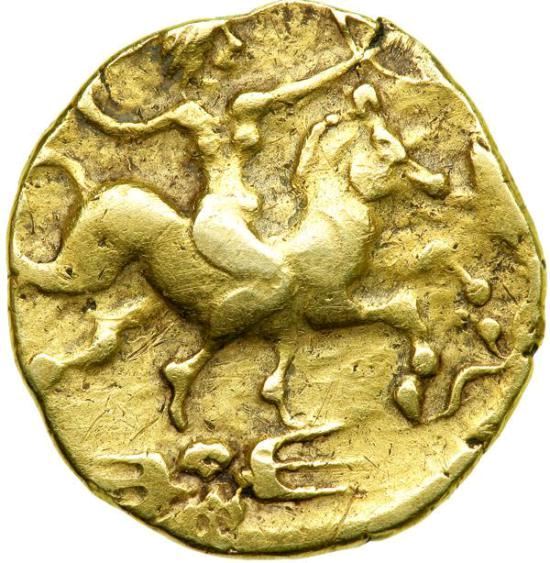
(1)
Aedui
.jpg)
An
AR
Quinarius
struck an unknown year
in
Lugdunensis
Obverse:
Reverse:
Diameter:
-
Die Orientation: -
Weight: 1.9 g
Die Orientation: -
Weight: 1.9 g
Ex Harlan J. Berk
No references provided for this coin
(2)
Leuci

Obverse: male head left with 3 locks of hair
Reverse: boar left; two circles below
Diameter:
17 mm
Die Orientation: -
Weight: 2.4 g
Die Orientation: -
Weight: 2.4 g
No notes for this coin
CCCBM III 398 - 404; Castelin 578 - 581
(3)
Nervii
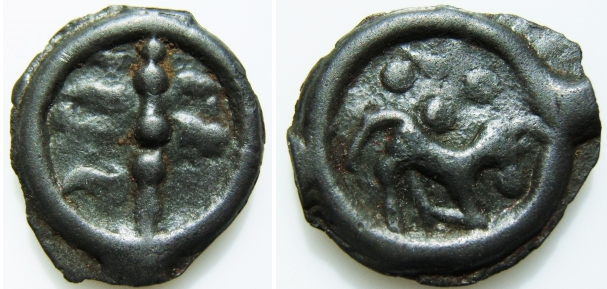
Obverse: Symmetrical design with eight 'leaves'.
Reverse: Horse right with three pellets and crescent above.
Diameter:
20.5 mm
Die Orientation: 4 H
Weight: 4.03 g
Die Orientation: 4 H
Weight: 4.03 g
Added onto the Wildwinds site.
D&T 629; LT 8620; Depeyrot, NC VII, 8.
(4)
Remi
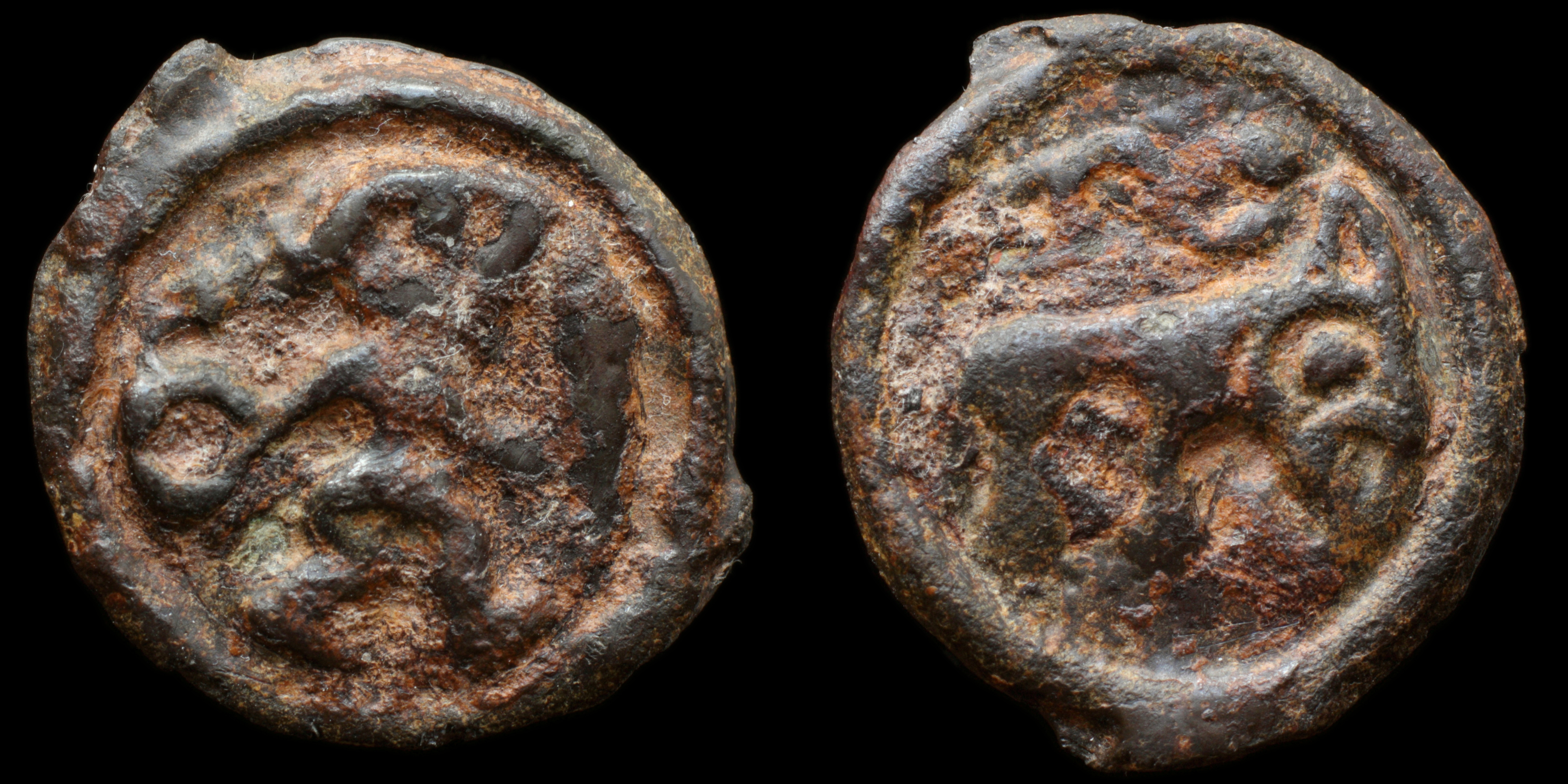
An
AE
unit
struck c. 100-50 BC
in
Durocortorum?
Obverse: warrior king walking right holding torc and spear
Reverse: bear right attacking snake right
Diameter:
20 mm
Die Orientation: -
Weight: 4.7 g
Die Orientation: -
Weight: 4.7 g
No notes for this coin
De La Tour 8124, SGCV I 136
(5)
Remi
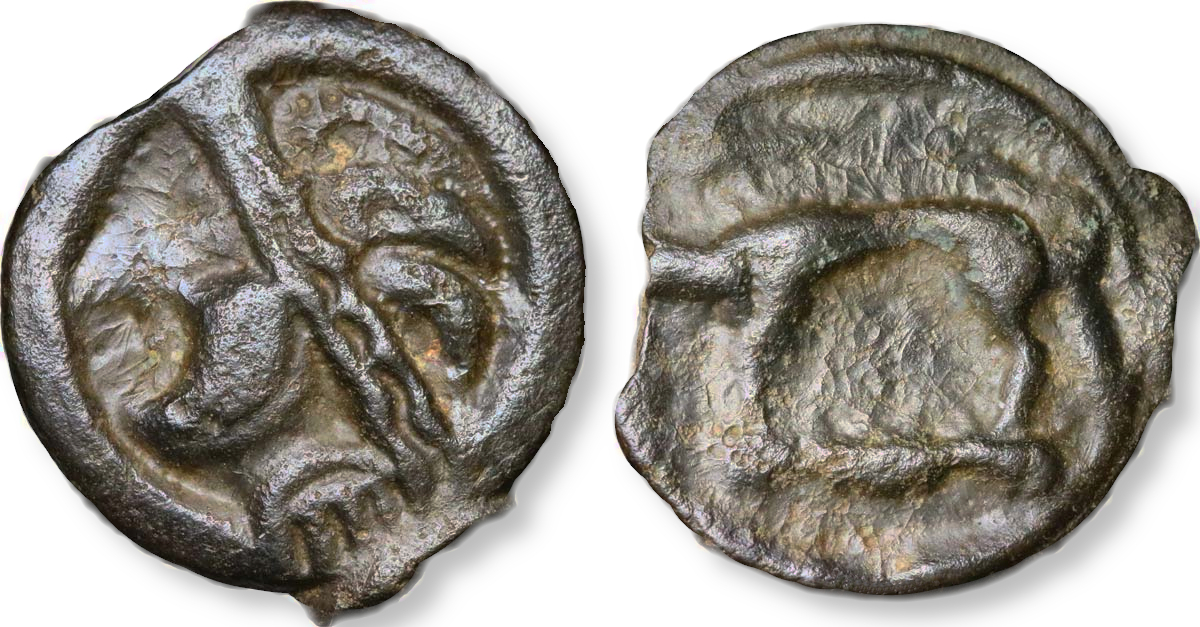
An
Potin
struck an unknown year
in
an unknown location
Obverse:
Reverse:
Diameter:
-
Die Orientation: -
Weight: 3 g
Die Orientation: -
Weight: 3 g
Area of Reims
No references provided for this coin
(6)
Senones
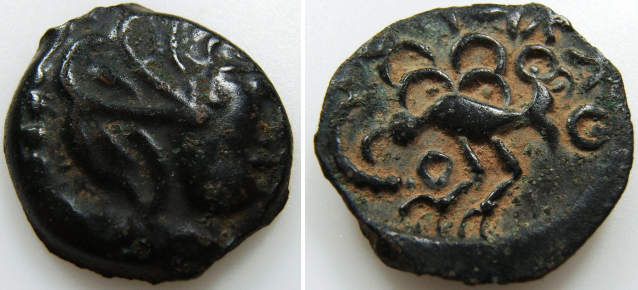
An
AE
Potin
struck 100-50 B.C.
in
Lugdunensis
Obverse: Anepigraphic, head with stylised curls right.
Reverse: [K]OIIAKA - Bird left, annulet before, two annulets containing pellets behind.
Diameter:
16.7 mm
Die Orientation: 11 H
Weight: 2.76 g
Die Orientation: 11 H
Weight: 2.76 g
Added onto the Wildwinds site.
LaTour 7490; DT 2634; BN 7490-7492; RIG 110. Scarce.
